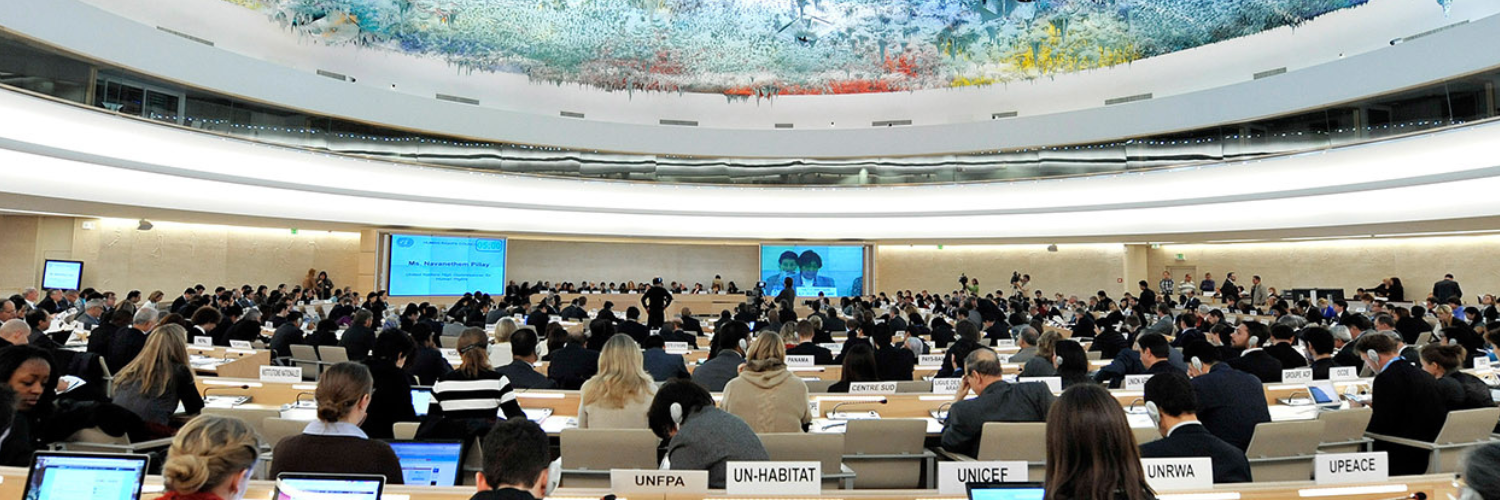WASHINGTON, D.C. April 19 (C-Fam) Dr. Jay Richards says the new UN Human Rights Council resolution on people born with disorders of sexual development is an attempt to obscure the reality of biological sex.
Richards, who directs the DeVos Center for Life, Religion, and Family at the Heritage Foundation, is a leading figure in countering the gender agenda nationally and internationally. His work is focused largely on protecting minors from attempts to change their sex through drugs and surgery.
He says the resolution is a “classic operation of gender ideologues, using a noble cause — in this case, the universality of human rights” to advance their own agenda.
The resolution purports to combat discrimination and harmful practices against people born with indeterminant secondary sexual characteristics – boys born with micro penises, girls born with enlarged clitorises that appear as penises, and other abnormalities.
The resolution was hailed by activist groups as a victory, although the margin was narrow. Twenty-four countries, voted in favor of the resolution, while twenty-three abstained, allowing adoption by consensus.
The UN Office of the High Commissioner for Human Rights (OHCHR) reported on the resolution, citing UN data as estimating that “up to 1.7 per cent of the population is born with intersex traits.” “Intersex” is the term used by gender ideologues in order to imply that sex — male and female — is actually on a continuum.
Richards says, “The Council is using individuals with rare disorders of sexual development [DSD] to attempt to debunk the sexual binary and imply that sex (or “gender”) exists on a spectrum. On the contrary, we understand that these individuals suffer disorders because we know how sexual reproduction works under normal development.”
He says, “The Council can’t even get the basic scientific facts right. It claims 1.7 percent of people have ‘intersex traits.’ This is bogus. In reality, only about 0.018 percent of the population has a DSD. It’s shameful to sully an effort to affirm the rights of individuals with DSDs with an ideology that seeks to erase our biological reality.
The 1.7% estimate was promoted by sexologist Anne Fausto-Sterling in her 2000 book, with the argument that human sex is not binary, but exists on a continuum. Fausto-Sterling’s ideas were eagerly adopted by the gender studies field, but faced pushback from biological scientists, who noted that her definition of “intersex” included a wide variety of conditions that had never been recognized as intersex previously.
The ideological nature of the resolution is demonstrated on the website of the Office of High Commissioner for Human Rights that includes such developmental abnormalities under the umbrella of “sexual orientation and gender identity.” The website further pushes the association by asserting that “[i]ntersex people may have any gender identity or sexual orientation” and repeating the claim that “experts estimate” that 1.7% of people are born with “intersex” characteristics.
While the language in the newly adopted resolution is relatively restrained, it is clear that the UN system and the group of mostly Western countries who pushed for its adoption are eager to use this issue to interject gender ideology more broadly in multilateral spaces.
View online at: https://c-fam.org/friday_fax/expert-pushes-back-on-new-un-intersex-resolution/
© 2025 C-Fam (Center for Family & Human Rights).
Permission granted for unlimited use. Credit required.
www.c-fam.org









